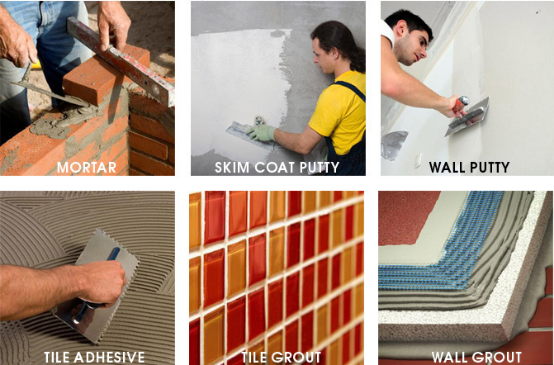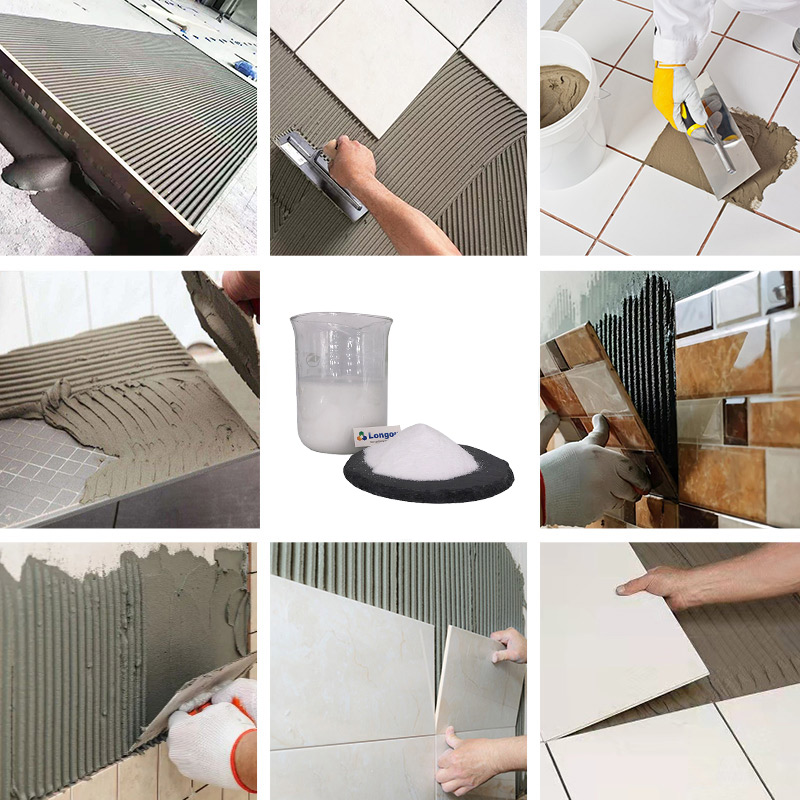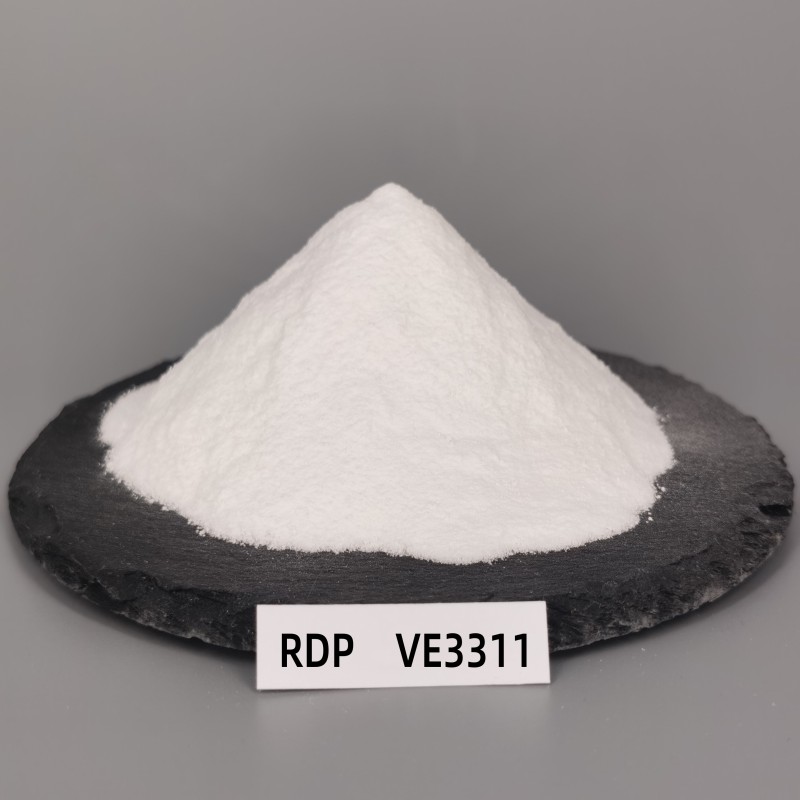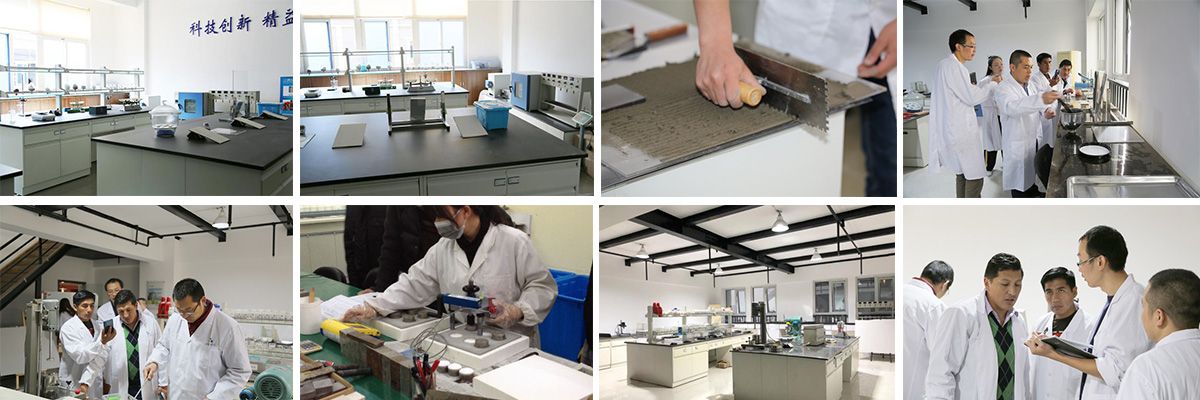As early as the 1930s, polymer binders were used to improve the performance of mortar. After the polymer lotion was successfully put on the market, Walker developed the spray drying process, which realized the provision of lotion in the form of rubber powder, becoming the beginning of the era of polymer modified dry mixed mortar.
For over 100 years, ceramic tiles have been used as coverings for walls and floors. Nowadays, they have become indispensable decorative materials. Tiles of various sizes, patterns, and grades can be seen everywhere. With the advancement of ceramic tile technology, the body of ceramic tiles is becoming increasingly dense and larger in size, posing great challenges for the laying of ceramic tiles. How to make large-sized ceramic tiles stick more firmly and ensure long-term laying reliability has become a new focus of attention in the field of modern decoration. Adhesive materials (such as polymer) are wetted on the surface of ceramic tiles, forming a wetting state between the two, resulting in a very small molecular spacing between the two. Eventually, a huge intermolecular force is formed at the bonding interface, tightly bonding the adhesive material with the ceramic tile. With the advancement of ceramic tile technology, increasingly dense ceramic tiles are difficult to provide more gaps for mechanical interlocking to form anchoring. However, intermolecular bonding is becoming increasingly important.
Redispersible latex powder (RDP) forms a polymer network in mortar products, connecting tiles and mortar through intermolecular forces. Even if the tiles are denser, they can firmly adhere to the mortar. Redispersible latex powder is formed by the polymerization of two or more polymers, and has different hardness based on the different proportions of polymer composition. When in a high-temperature state, the rubber powder will exhibit varying degrees of softening due to its own hardness. The harder the adhesive powder, the lower the degree of softening at the same temperature, and the stronger the ability to resist external forces at high temperatures. Therefore, for the adhesive powder used in ceramic tile adhesive, priority should be given to selecting high hardness adhesive powder, which can effectively ensure long-term adhesion in high-temperature environments. When using the thin layer construction method for tile laying construction, for the convenience of construction, workers will choose to apply glue on a large area before proceeding with the tiling work. During this process, the ceramic tile adhesive will form skin on the exposed surface due to environmental wind speed, substrate water absorption, and internal cellulose ether dissolution and movement. Due to the fact that wetting is the key to the close bonding of materials, when the crust is difficult to break, it will make it difficult for the tile adhesive to wet the tile surface, ultimately affecting the bonding strength. Choosing redispersible latex powder, on the one hand, due to its structure, it can play a certain role in water retention, delaying the rate of hydration and skinning. On the other hand, it can improve the adhesion force per unit area, even if the infiltration area is reduced, it can still ensure the overall adhesion force. At the same time, it is also very important to choose cellulose ether reasonably. As the size of ceramic tiles increases, it is increasingly easy to experience hollowing and even the occurrence of ceramic tile detachment after laying. This issue is closely related to the flexibility of the bonding material. Ceramic tiles have high density and low deformation, and the base layer may experience significant deformation due to various external and internal factors. The ceramic tile adhesive used as a bonding layer must be able to absorb the stress generated by deformation. If the ceramic tile adhesive does not contain adhesive powder or has a low content of adhesive powder, it will be difficult to absorb the stress caused by deformation, causing the entire paving system to gradually fall off at weak points, forming hollow drums.
Redispersible latex powder can provide tile adhesive with the ability to adapt to stress deformation, which improves the flexibility of the tile adhesive. In this system, the rigidity of ceramic tile adhesive is mainly provided by inorganic materials such as cement and sand, while flexibility is provided by adhesive powder. Polymer penetrates through the pores of cement stone, forming a polymer network that serves as an elastic bond between rigid components, giving it flexibility. When deformation occurs, the polymer network can absorb stress, ensuring that the rigid components do not crack or damage. Therefore, improving the flexibility of adhesive materials is crucial for reducing hollowing. An appropriate amount of adhesive powder can improve the formation of a network structure of polymer inside the ceramic tile adhesive.
Post time: Aug-08-2023






